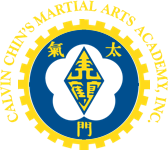Q: What is a martial arts "system" and what does the training program involve?
Most martial arts involve complex training programs which aim to simultaneously develop physical strength, coordination, timing, appreciation for esthetic elements of movement, and kinesthetic awareness. Different "systems" emphasize different elements and each has its own training philosophy and theories about how techniques are used. Most martial arts also place great importance on developing mature, self-controlled students who use their abilities responsibly and demonstrate respect for all people. Training programs involve callisthenic exercises, repetitive drills to develop coordination and timing and breathing exercises to increase relaxation. Students learn choreographed sequences of movements (forms, katas, kuens) which teach timing, esthetics, logic and practical application. Students also learn concentration and self-discipline.
